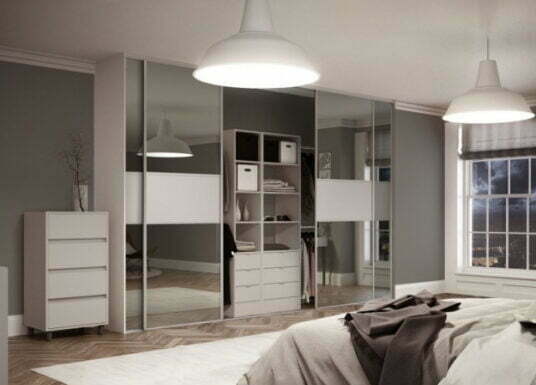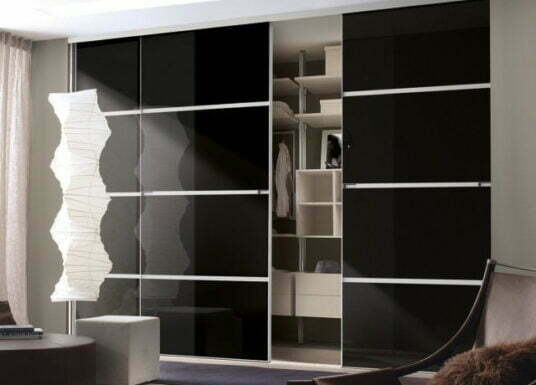Common Mistakes When Building Your Own Wardrobe
Building your wardrobe can be an exciting and rewarding DIY project, offering the chance to create a perfectly tailored space to your needs and style. However, with careful planning and consideration, it’s easier to avoid common pitfalls that can turn your dream wardrobe into a less-than-ideal reality.
In our guide, “Common Mistakes When Building Your Wardrobe,” we’ll delve into the frequent oversights and errors that DIY enthusiasts encounter during the wardrobe construction process.
This article aims to equip you with the knowledge and insights needed to avoid these common blunders, from misjudging measurements to choosing unsuitable materials.
Whether you’re a seasoned DIYer or a first-time builder, understanding these mistakes will help ensure your wardrobe project is successful, functional, and aesthetically pleasing, genuinely making the most of your personal space.
Underestimating the Importance of Accurate Measurements
One of the most crucial yet often underestimated aspects of building a wardrobe is the accuracy of measurements.
Precise dimensions are the foundation of any successful wardrobe project, as even a tiny miscalculation can lead to significant problems down the line, such as doors that don’t fit, wasted materials, or a final product that doesn’t suit the intended space.
It’s essential to measure not just the intended area for the wardrobe but also consider the room’s layout, door and window placements and even the ceiling height. Standard measurements might only sometimes apply, especially in rooms with uneven floors or walls.
Taking the time to double-check measurements and account for any irregularities ensures that your wardrobe fits perfectly in your designated space, functions as intended, and looks aesthetically pleasing.
This attention to detail in the early planning stages can save time, resources, and frustration, ultimately leading to a more satisfying and efficient wardrobe-building experience.
Overlooking the Need for Adequate Ventilation
Overlooking the need for adequate ventilation in wardrobe design is a common oversight that can have long-term implications. Proper ventilation is crucial to prevent the buildup of moisture, which can lead to mould and mildew, damaging the wardrobe and the items stored within.
This is particularly important in areas with high humidity or rooms lacking natural airflow. Incorporating ventilation into your wardrobe design can be as simple as ensuring enough space between the wardrobe and the wall or opting for doors and panels that allow air to circulate.
Slatted doors or built-in air vents are practical solutions that seamlessly blend with the overall design. Not only does this protect your clothes and accessories from dampness and odour, but it also helps maintain the structural integrity of the wardrobe over time.
Paying attention to ventilation during the planning phase will ensure that your wardrobe remains a fresh and functional part of your home for years.
Ignoring the Room’s Layout and Size
Ignoring the room’s layout and size when planning a wardrobe can lead to impractical and cumbersome results. It’s essential to consider how the wardrobe will fit into the existing space in terms of physical dimensions and aesthetic flow.
A wardrobe that’s too large can overwhelm a small room, making it feel cramped, while one that’s too small may not meet your storage needs and look out of proportion. Consider the placement of windows, doors, and any other architectural features that could impact the wardrobe’s position and functionality.
It’s also essential to consider how the wardrobe doors will open and whether there’s sufficient space for easy access without obstructing movement. By carefully considering the room’s layout and size, you can ensure that your new wardrobe fits perfectly and enhances the overall functionality and appeal of the space.
This thoughtful approach to design will result in a wardrobe that complements your lifestyle and the aesthetics of your home.
Choosing the Wrong Materials
Choosing the wrong materials for your wardrobe can have lasting implications on its durability, appearance, and functionality. The material selection should align with your aesthetic preferences and the practical demands of the wardrobe’s usage.
For instance, while high-gloss finishes may lend a sleek, modern look, they might not be the best choice for high-traffic areas due to their susceptibility to fingerprints and scratches. Similarly, solid wood conveys richness and warmth but can be susceptible to warping in humid conditions.
It’s essential to consider factors like the room’s climate, the level of daily wear and tear the wardrobe will endure, and maintenance requirements. Opting for materials that balance beauty with resilience—like quality laminates, robust metals, or treated woods—can ensure your wardrobe stays functional and attractive.
This thoughtful consideration in material choice not only enhances the longevity of your wardrobe but also ensures it remains a cherished and functional element of your home.
Neglecting the Importance of Functional Design
Neglecting the importance of functional design in wardrobe construction can lead to a space that is aesthetically pleasing but needs to be more practical. A functional design tailors the wardrobe not only to fit the space but also to meet the specific storage needs of the user.
This involves considering the types and quantities of items to be stored and designing accordingly with a mix of hanging spaces, drawers, shelves, and specialised compartments like shoe racks or accessory drawers.
The height, depth, and accessibility of each section should be thought out to ensure ease of use. For instance, frequently used items should be placed at reachable heights, while seasonal clothing can be stored higher up or in deeper sections.
Also, integrating features like pull-out bins or rotating shelves can maximise space and improve organisation. A well-planned functional design optimises storage capacity and makes selecting outfits and accessories more convenient and enjoyable.
DIY Overconfidence – When to Seek Professional Help
While DIY projects can be fulfilling, more confidence in building a wardrobe can sometimes lead to costly and time-consuming mistakes. It’s important to realistically assess your skills and the project’s complexity before beginning.
If the design involves intricate craftsmanship and specialised tools, or if you’re working with challenging materials, it might be wise to consult a professional. Similarly, suppose the wardrobe is part of a more extensive renovation that significantly alters the room’s structure, such as moving walls or changing the layout.
In that case, professional input is crucial for ensuring safety and compliance with building codes. Professionals can also offer valuable advice on optimising space, choosing suitable materials, and achieving high-quality finishes.
Seeking help doesn’t mean abandoning the DIY spirit; instead, it’s about recognising when collaboration with experts can elevate your project, ensuring that your custom wardrobe is beautifully designed, structurally sound, and efficiently executed.
Begin Your Dream Wardrobe Journey: Avoid DIY Pitfalls With Sliding Robes Direct Wardrobe Guidance
Embarking to create your dream wardrobe can be exciting and challenging. With Sliding Robes Direct, you can easily navigate this adventure and avoid the common pitfalls of DIY wardrobe projects.
Our expert guidance ensures seamless style, functionality, and personalised design integration in your space. Sliding Robes Direct offers tailored solutions that fit your unique needs and aesthetic preferences, whether aiming for a minimalist look or a lavish arrangement.
Our extensive range of quality materials and innovative design options empower you to bring your vision to life, transforming your wardrobe area into a harmonious blend of form and function.
This approach enhances the appeal of your home and adds significant value to it, making Sliding Robes Direct an ideal partner in your wardrobe transformation journey. Get in touch today!

